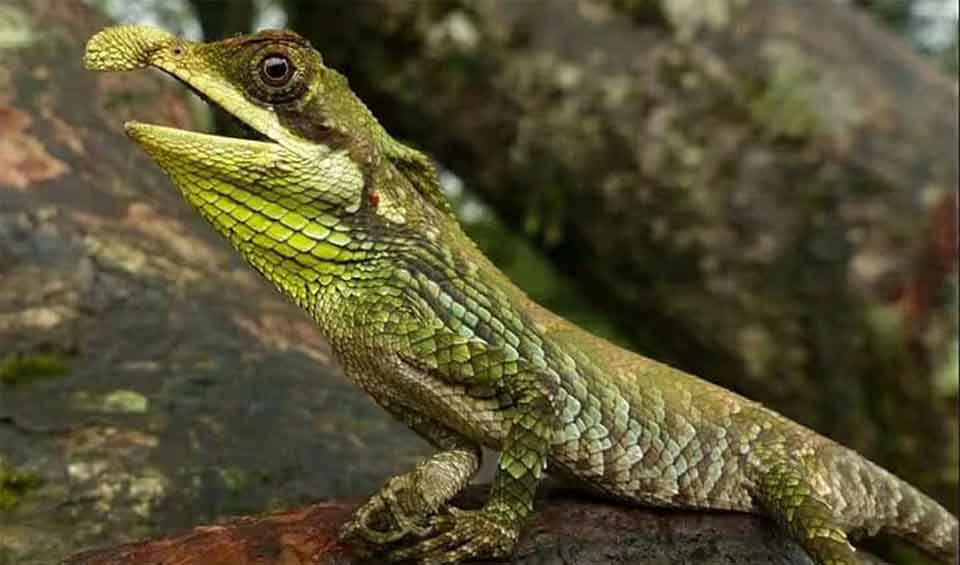A unique and fascinating reptile found only in the forests of Sri Lanka. This lizard is named after the unusual leaf-shaped structure on its snout, which makes it look like it has a tiny leaf growing from its face. This distinctive feature is what sets the Leaf-nosed lizard apart from other lizards and gives it a truly remarkable appearance.
Leaf-nosed lizards have bodies covered in rough, textured scales that give them a rugged appearance, and their coloration is typically a mix of browns, greens, and grays. These colors help them blend into the leaves, moss, and bark of the forest floor, where they spend most of their time. This camouflage is important for avoiding predators like birds and larger reptiles.
These lizards are insectivores, meaning they eat insects. Their diet mainly consists of ants, beetles, and other small invertebrates that they find on the ground. They have sharp eyesight and a quick, sticky tongue that they use to catch their prey. Despite their small size, Leaf-nosed lizards are skilled hunters, relying on their agility and reflexes to capture food.
One of the most interesting behaviors of the Leaf-nosed lizard is its tendency to stay hidden. These lizards are shy and prefer to remain out of sight, often hiding under leaves or in the crevices of tree bark. They are most active during the early morning and late afternoon when the temperature is cooler. During the hottest part of the day, they often retreat to shady spots to avoid overheating. When threatened, they rely on their camouflage to stay undetected, remaining completely still to avoid drawing attention.
Distribution
 Sri Lanka
Sri LankaAnything we've missed?
Help us improve this page by suggesting edits. Glory never dies!
Suggest an editGet to know me
Terrestrial / Aquatic
Altricial / Precocial
Polygamous / Monogamous
Dimorphic (size) / Monomorphic
Active: Diurnal / Nocturnal
Social behavior: Solitary / Pack / Herd
Diet: Carnivore / Herbivore / Omnivore / Piscivorous / Insectivore
Migratory: Yes / No
Domesticated: Yes / No
Dangerous: Yes / No




